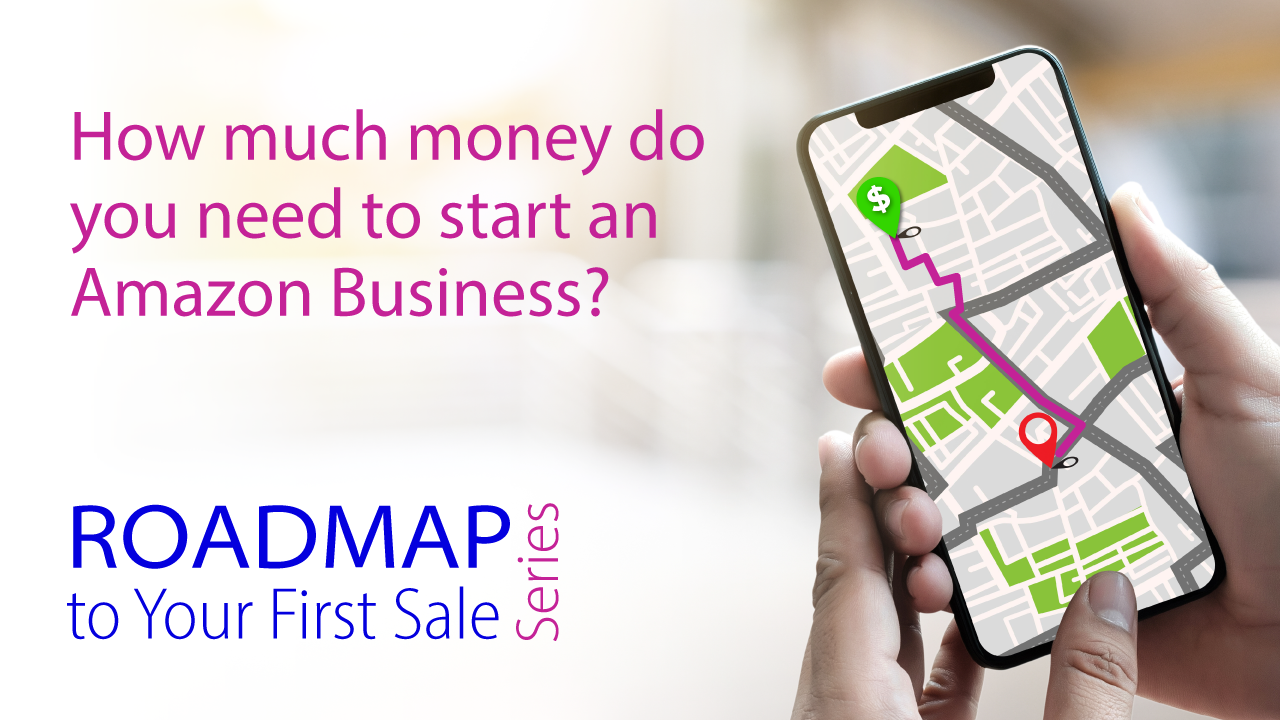How much money do you need to start an Amazon Business? [Roadmap to Your First Sale series - 2]

Have you ever been to a store where nothing has a price tag?
You are browsing through different aisles and you see something you like. Grabbing up this great find you look for the price tag and NOTHING.
It's nowhere to be found.
You examine the shelf and still...no price is listed. UGH.
Now, if you want to buy this item you need to find a sales associate, or take the item up to a register and get a price. By this time you probably annoyed. “What happens if I get all the way to the register and it is out of my price range?”. If you are anything like me, I would say forget it and move on. IF I am really, really interested, I will probably do the work to find the price but will still remain annoyed.
Knowing how much something will cost before you invest in it is essential.
When it comes to starting a business this is even more critical to understand. Starting ANY business will cost you both time and money.
The most important question is HOW MUCH DOES IT COST to sell on Amazon in 2020?
You’ve been looking into selling on Amazon FBA and you want to know the truth about the time and financial commitment you need to make in order to make this work for you.
We can help with that.
As with any new adventure the more time, effort and money you put into learning how it all works, the more you will get out of it. The good news about selling on Amazon is that you can take it as fast or as slow as you want.
Many of our students start an Amazon FBA business as a side hustle while working a full-time job. This is very reasonable. Setting aside a few hours a week to learn and a few more to take action on what you’ve learned is the key to success.
Who’s Got Time? You do!
If you work a normal 9-5 you still have time to start and grow a business. It all comes down to how you manage your time. Everyone has the same 168 hours each week - you have more time than you think inside that 168 hours to start an Amazon business.
An average person working a 9-5 job spends 142 hours per week sleeping, eating, commuting, working, etc. That even includes 7 hours of untracked miscellaneous time. That leaves you with 26 hours of time each week. That’s more than a day!
Take 4 of those 26 hours each week and dedicate them to your business. Here’s an example:
Monday Evening: Set aside two hours to learn something that will help you start your business - take a course, read a few blog posts, or watch a YouTube video.
Saturday Morning: Allot two more hours to practice what you learned earlier in the week. If you watch a video on product sourcing during the week, use the weekend to go to a few stores (online or brick and mortar) and practice what you’ve learned looking for inventory to sell.
At the end of the week, you will have invested four hours into your new business. Make sure to balance learning with action. Learning is great but too much consumption leads to overwhelm and analysis paralysis and too much “doing” and not enough learning leads to costly mistakes.
Start with four hours a week.
Money! Money! Money! Let’s Get Real...
If you want to start a business but you have no money, you are in the wrong place.
What you actually need is a job, not a business. When you have a job that pays you enough to start investing some of your income into a business, then you are ready to take the next step.
We suggest starting your business with at least $500. This investment will get you a few tools, a beginner's course on how to get started and approximately $350 to spend on products to sell. It's a great place to start because it is a small investment to test the waters. If you start by investing $500 and a few months of your time you will get a pretty good idea of whether this business is right for you or if you need to change directions.
Kristin’s Insight:
In 2009 I started my FBA business with a stack of free books. The first investment made was only $100. I had no fancy tools, no smartphone, no chrome extensions, no educational webinars or podcasts. I built the business slowly by adding new tools each month along with additional inventory. Growing slower than others was ok because I needed to earn income from each payout, not reinvest the entire amount back into the business (which we don’t recommend).
Everyone can grow their business at their own pace but one thing is certain - What you contribute in time, effort and financial investment will determine your results. The more you put in to your business the more you will get out of it.

This post is the second in a series to help you determine if selling on Amazon is right for you. In the next post, we are going to help you set up your business in a legitimate way so that you are ready to start earning an income on Amazon.
Ready to get started? You’ll be ready for your first sale on Amazon in as little as two weeks with our Start FBA Today™ program.
Recommended Posts:
- Can I sell on Amazon?
- Is selling on Amazon a legitimate business opportunity?
- How do I open an Amazon seller account?
- How do I find products to sell on Amazon?
- How do I send in my first shipment to Amazon?



